Charleston charms. No wonder it’s so often voted #1 city to visit. Tourism has been the main industry since the 1800s and the city works hard to keep it that way. Visitors walk on cobblestone streets past pastel mansions treasured by preservationists. They enjoy sweeping vistas from roof top bars because no building can be taller than the numerous church steeples. They are fed body and soul by the bounty of coastal waters and a rich culture and cuisine.
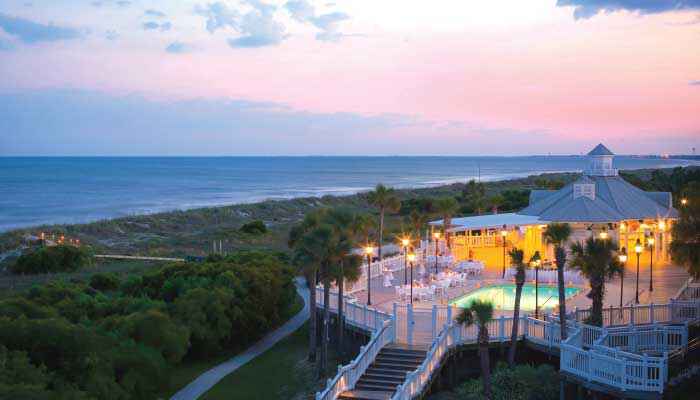
Walking and eating are the two main activities to enjoy. Lovely downtown hotels such as The Spectator, the Dewberry or the Belmond Charleston Place are in walking distance of just about everything. Stroll along the Battery seawall for water views on one side and a close up look at the stately mansions on the other side. Meander through the historic district South of Broad and drool over the $3 million plus single houses with porches running along one side. Most notable is Rainbow alley, where the largest grouping of Georgian row houses anywhere in the U.S. are literally painted the colors of the rainbow. Check out the four-block long City Market filled with vendors selling food and arts and crafts such as the traditional sea grass baskets. Visit a house museum for a glimpse of the good life in the 1800s and, for counterpoint, the Old Slave Mart Museum which tells the story of slavery in Charleston. Walk all the way up King Street known for shopping and now as the city’s restaurant row.
Until the last 30 years or so Charleston was renowned largely for home cooking. Only recently have award winning chefs — starting with such pioneers as the legendary Frank Lee who founded S.N.O.B. (Slightly North of Broad) — put Charleston on the restaurant heat map. The most recognizable name, Sean Brock, catapulted to national fame with McCrady’s and Husk before his recent relocation to Nashville. Names to know: Mike Lata, Jeremiah Bacon, Jason Stanhope, Michael Toscana, Greg Johnsman, BJ Dennis.
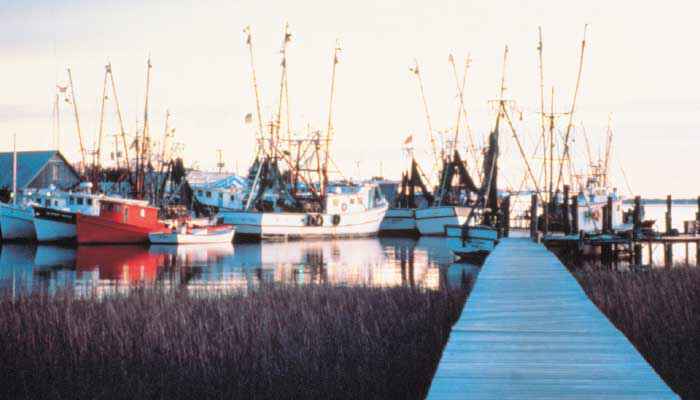
Oyster roasts reign supreme. Biscuits and BBQ are still important. Shrimp and grits and she crab soup are still traditional favorites but local chefs have brought the cuisine onto the national stage. Michael Toscana’s pasta at Le Farfalle could easily stand up to Italian competitors but he often ups the ante by adding a Southern twist to his dishes, for example, by milling sorghum and adding it to his buckwheat pasta dough for cacio e pepe. Greg Johnsman of Geeche Boy Grits fame supplies freshly milled grits to his popular new restaurant Millers All Day. At FIG, Jason Stanhope obsesses over every delicious grain of locally treasured Carolina Gold Rice and is also passionate about local sustainable seafood such as grey Trigger fish which he grills and serves with a Manzanilla Sherry sauce, raisins, and pine nuts. Jeremiah Bacon is also an expert on underutilized species and features a unique seafood charcuterie board with the likes of grouper bologna and Trigger fish brandade. BJ Dennis is on a mission to make the contributions of Gullah/Geeche culture and cuisine understood. Carrie Morey is a shining example of female entrepreneurship with her hand-made biscuits at Callie’s Hot Little Biscuit on Upper King and in City Market.
There’s no end to the eating opportunities. But, yes, there are things to do between meals. Take a boat ride to Fort Sumter where the first shots of the Civil War were fired. This kills two birds with one stone: getting out into the scenic harbor on a boat and visiting an historic fort.
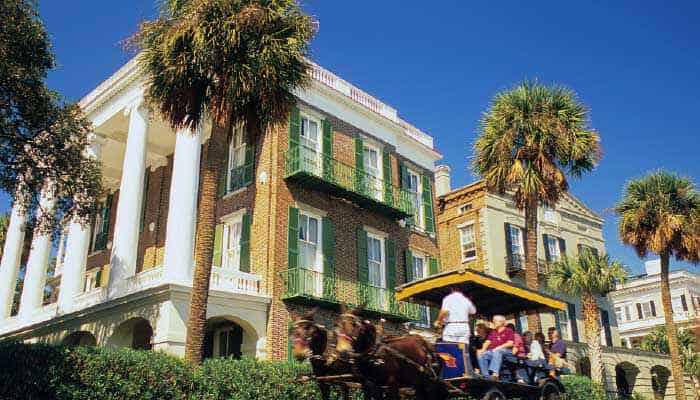
Visit Patriot Point. USS Yorktown WWII aircraft carrier and museum; historic aircraft; Vietnam experience.
Tour the Charleston Tea Plantation on Wadmalaw Island. This is the only tea plantation in North America. It’s owned by Bigelow Tea and master tea taster Bill Hall. Educational tours explain the growing and processing of tea. It’s easy to add a stop to the magnificent Angel Oak believed to be as much as 400 years old on St. John’s Island.
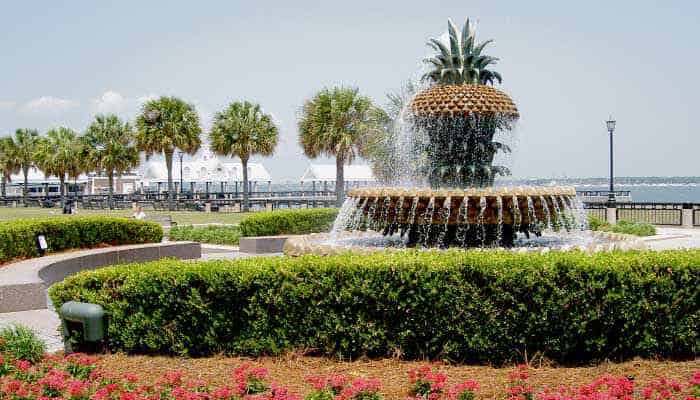
Visit one of the many nearby magnificent antebellum plantations. There are tours offered to most but renting a car makes everything accessible. The closest is Boone Hall in Mt. Pleasant known for its magnificent three quarter mile Avenue of the Oaks dripping with moss. The others, Drayton Hall, Magnolia Plantation and Gardens, and Middleton Place are on the Ashley River or directly across the Ashley River from north Charleston.
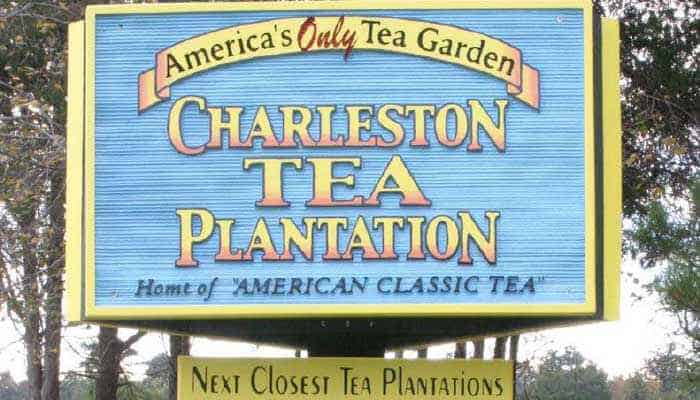
Beverly Stephen, the former executive editor of Food Arts magazine, is co-owner of Flavor Forays, a culinary travel company.








![This exquisite bayfront shingle-style residence, meticulously crafted in 2014 by esteemed architect Craig Arm and master builder J.P. Spano, embodies unparalleled quality and elegance. Set on approximately 1.6± pristine acres in the exclusive enclave of Remsenburg, 46 Club Lane spans 9,000± sq. ft. of opulent living space. Represented by @theenzomorabito of @douglaselliman. [link in bio]](https://hamptonsrealestateshowcase.com/wp-content/uploads/sb-instagram-feed-images/473828596_18486469495030135_3335991097046992426_nfull.webp)
![134 Kellis Pond Lane is modern new construction that offers 3 levels of interior space totaling 10,850± sq. ft., a 1,400± sq. ft. roof deck, reserve across the street, and pond views to the East. The 20-room home features every amenity: 9 bedrooms, an office, gym, game room, theater, heated garage and two structure pool/guest house (one with office, one with lounge). Represented by @dawnbodenchak and @brucebaranoff of @sothebysrealty. [link in bio]](https://hamptonsrealestateshowcase.com/wp-content/uploads/sb-instagram-feed-images/473789420_18486427501030135_1408697563460710985_nfull.webp)
![@palmhousehotel_ is a luxurious modern 79-room hotel just mere steps from the Atlantic Ocean and ritzy Worth Avenue. It’s Palm Beach’s first new hotel in four years and highlights include an intimate dining room and bar, pool deck, sprawling suites, and a pink-and-green aesthetic all its own. [link in bio]](https://hamptonsrealestateshowcase.com/wp-content/uploads/sb-instagram-feed-images/473064779_583909624803181_7882225745991892474_nfull.webp)
![After nearly four years of aiming for a new owner, the penthouse triplex that the late Joan Rivers once called her own has returned for sale — and for a significant discount. After initially seeking $38M in 2021 the 4,661 sq. ft. residence, now owned by a Saudi prince, hit the market on Wednesday for $28M. Rivers resided there for 28 years — and during her ownership entertained A-list guests, including the late Princess Diana. [link in bio]](https://hamptonsrealestateshowcase.com/wp-content/uploads/sb-instagram-feed-images/472980392_9056999247713030_8134924202410627396_nfull.webp)
![The perfect combination of a reinterpreted Hampton shingle-style residence with a desirable, south-facing, bordering reserve location is found at 3 Grace Court in Water Mill. The bright home with its open floor plan blends easily the spacious interior with the expansive outdoor living and entertaining spaces. Represented by Peter Huffine and the @leightoncandler_team of @thecorcorangroup. [link in bio]](https://hamptonsrealestateshowcase.com/wp-content/uploads/sb-instagram-feed-images/472509500_18485481598030135_7028950388460928652_nfull.webp)
![With ocean access seconds away, the Atlantic’s gentle waves and refreshing ocean breezes create a natural soundtrack for everyday life. Set on 1.84± acres with 140± ft. of prime frontage along Shinnecock Bay, this 5,092± sq. ft. contemporary home embodies refined coastal living. Represented by @pattyandbriansellthehamptons of @hamptonsrealestate. [link in bio]](https://hamptonsrealestateshowcase.com/wp-content/uploads/sb-instagram-feed-images/472769890_18485303518030135_110036430985429876_nfull.webp)
![Situated on 2.85± acres of peaceful bliss, 7 Fourteen Hills Court checks all the boxes for a country getaway in Southampton with water vistas and show-stopping sunsets. Gorgeous views of Little Peconic Bay and Noyac Bay are featured from almost every room, while French doors lead outside to the outdoor kitchen and heated gunite pool. Represented by @cynthiabhamptons of @brownharrisstevens. [link in bio]](https://hamptonsrealestateshowcase.com/wp-content/uploads/sb-instagram-feed-images/472525103_18485112949030135_2928941838010918550_nfull.webp)
![Step into a realm of unparalleled design with this one-of-a-kind 10,000± sq. ft. modern marvel at 145 Neck Path. Engineered by Jeff Smilow, the structural genius behind NYC's One World Trade Center, this home redefines the art of living. Represented by @jennylandeydoubleagent, @zack.dayton, and @ethandayton of @sothebysrealty. [link in bio]](https://hamptonsrealestateshowcase.com/wp-content/uploads/sb-instagram-feed-images/472767153_1070015938141774_4912539490993255940_nfull.webp)
